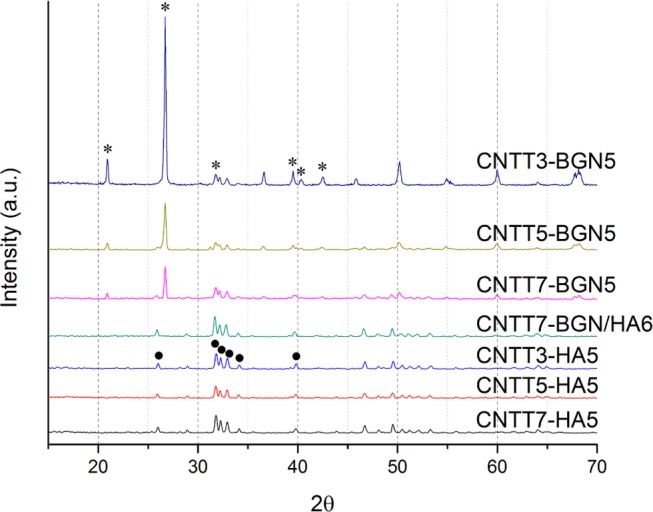Figure 3.

XRD patterns of CNTT–BGN, CNTT–HA, and CNT–BGN/HA scaffolds. CNTTy–BGNx: y and x correspond to the number of infiltrations of CNTs and ceramic (HA or BG) nanoparticles, respectively (as an example CNTT3–BGN5 means a ZnO template was infiltrated five times with BG nanoparticles and three times with CNT dispersion). Due to the smaller diffraction of X-rays by CNTs, the intensity of ceramic peaks is more pronounced in structures with a lower amount of infiltrated CNTs. The XRD patterns of the CNTT–BGN structures are in conformity with α-quartz peaks, and CNTT–HA structures mostly with hydroxyapatite (•hydroxyapatite, *α-quartz). Interestingly, the combined structure (CNTT–BGN/HA) only reveals the hydroxyapatite XRD pattern.
